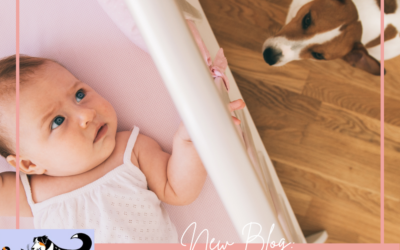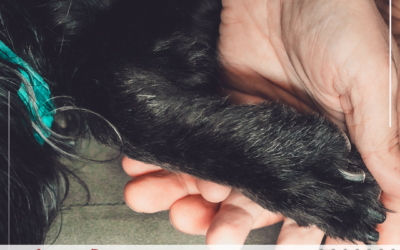Dogs and cats can, in many cases, live in harmony or peacefully coexist. But there’s several things that can be done to help boost the chances of success. First, while it’s common for people to think cats cannot be trained and that if dogs and cats are going to live together, “that the dog needs more training.” Cats can be trained. Cats should be trained. It’s not fair to the dog to put 100% of the responsibility of successful integration on the dog.
Dog and Cat Selection
For the best chances of success, both the dog and the cat should have previous positive experience living with the other species. So this means if you’ve got a dog and are adding a cat, seek out one who has lived with a dog before and vice versa. If the dog has every injured or killed a critter or other dog, they should not be introduced to cats.
If this is not possible, consider the ages and personalities of the animals. Dogs who have not been properly socialized to cats may see the cat as prey. If the dog is biddable, gentle, relaxed and friendly and is not much of a predatory type (i.e. doesn’t chase critters when outdoors), he is a better prospect to develop a relationship with a cat. Predatory types (terriers, hunting dogs, etc.) are much more stressful for cats and must be constantly managed when together. Predation is not able to be trained out as it is in the dog’s DNA (what they were bred to do) and is deeply ingrained.
In general, relaxed, laid back cats and kittens are often the best prospects to accept a dog. Older cats are at lower risk to flee and trigger chasing, which allow a social bond rather than a predator-prey one. Cats who are declawed, shy, skittish or fearful are less likely to be successfully integrated and could have a significant decrease in quality of life if a dog is introduced. Cats who have not been properly socialized to dogs will almost always behave defensively, by fleeing, giving off defensive or aggressive displays.
Ensuring Safety
Next we want to ensure the safety of both the cat and the dog. This will mean lots of strict management and very, very slow introductions. If you rush this process, someone could get injured or scared enough to ruin the whole process. Never force interactions. Never force the cat (or dog) into proximity by holding them, caging them or otherwise restricting their option to escape. This is stressful and does not help. Aside from being inhumane, stress is a common reason for cats to have litter box regressions.
Baby gates, cat doors and escape routes for the cat – high surfaces – can help accomplish this. It is important that the cat can retreat away from the dog and then venture out on her own terms into the dog’s space her own pace. The cat must have access to food, water and litter in this area so no interactions with the dog are forced.
Skills To Train
Prior to any introductions, the dog and cat should have some basic skills trained. The cat should have a recall (come when called) as well as a go to place so you can direct them to move away if you need to. The dog should have a rock solid recall away from fast moving things, a leave it and a down-stay with distractions proofed including fast moving things. Schedule a session if you need help building and proofing these skills.
Facilitating Initial Introductions aka CAT TV
When you first introduce a dog to a cat, the dog should be on leash andor behind a gate, allowing for the dog to see but not have access to the cat. Have lots of high value treats for both the cat and the dog and reward frequently for any small positive step. This may initially be looking at the other species even if they don’t approach. We want to create a strong foundation that the presence of the other predicts good stuff.
The cat should have plenty of hiding and escape options but should not be allowed to enter the dog’s space. You may need a double barrier or two baby gates stacked in the doorway one on top of the other to prevent the cat from jumping. This sets up, “CAT TV” where the dog can watch the cat behavior normally from a safe distance and the cat can decide to approach the gate or not. We’re looking for signs are cautious investigation and gentle wagging, along with reading the cat’s body language and backing off if the cat gives off any defensive signals. Things to be concerned about would be instant attempts to chase, whining, barking and agitation from the dog. Many dogs fall somewhere in the middle. Use this CAT TV as an opportunity to practice the basic skills like leave it and recall and down/stay on a bed with the cat as a distraction. If this is too difficult for the dog you may need to create more distance from the cat to begin with. Practice this for many days, weeks or months, until the dog is reliably responding to cues and the cat is comfortable approaching the gate. Be sure to practice with the cay playing, running and acting completely normally.
Gradual Integration
Once you’ve completed CAT TV, then move to the dog enclosed in an x-pen or on leash with the cat free roaming, again practicing your trained behaviors. Do short sessions, so as not to stress out either species and remember to keep up your steady flow of high value food for both. If this is successful then you can move to a long-line inside, giving the dog more distance and freedom before moving to off-leash. Once off-leash is granted, there should still be supervision and do not leave the two together unsupervised (like when you leave the house) until you have had several months of off-leash supervised access with no incidents where you’ve needed to intervene.
Lastly, dogs should never have access to the cat’s litter box. Not only is this unsafe for the dog to ingest, the dog going into the cat’s box is very stressful for the cat. Use a cat flap or a door strap to prevent the dog from having access to the room or closet where the box is kept.
If you take your time and select the right temperaments for both the cat and the dog, they can live peacefully together. If you need help with any training – cat or dog – set up a session!
Happy training!
![]()




